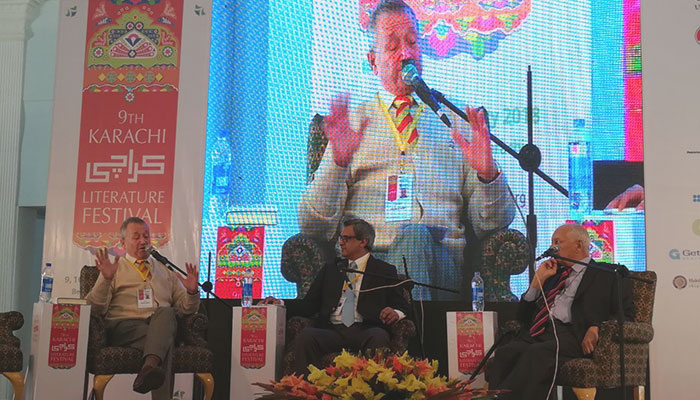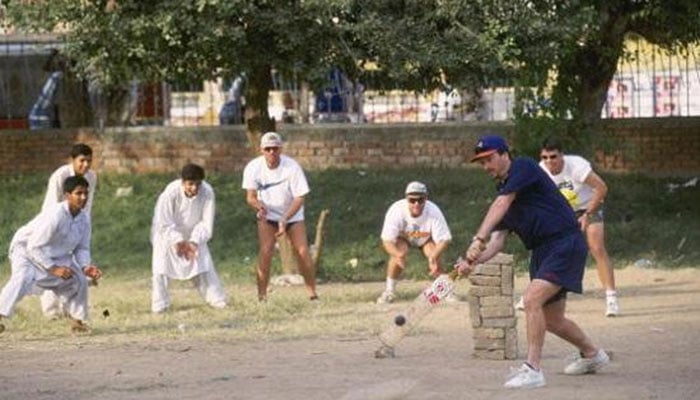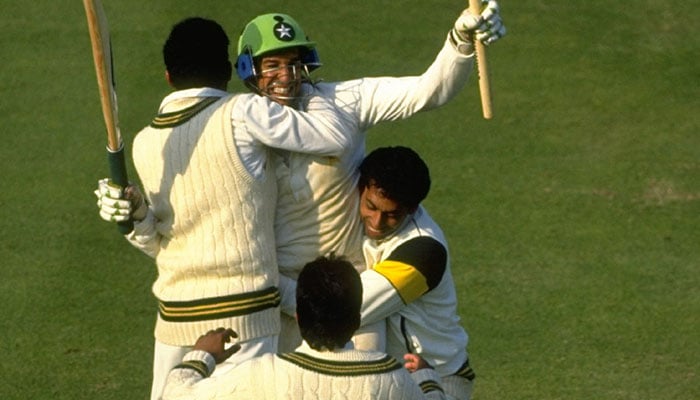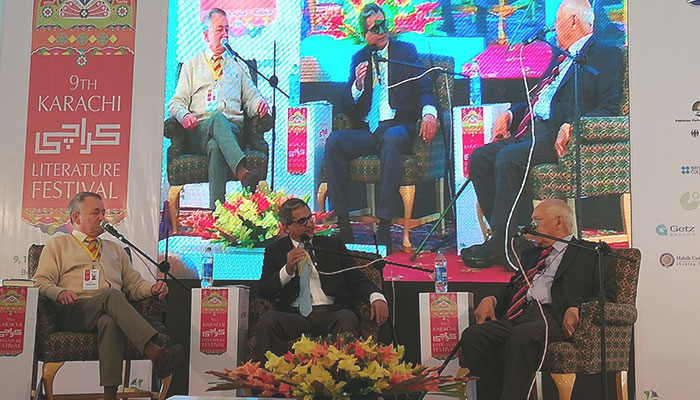The madness that is cricket: Pakistan’s special bond with the game
British author Richard Heller and former PCB chief Shahryar Khan discuss Pakistan’s mad love for cricket at Karachi Literature Festival

Pakistan’s love for cricket – often to the point of madness – is no secret. In fact, it intrigued famed British journalists Peter Oborne and Richard Heller to dedicate a major part of their lives trying to understand what makes cricket the heartbeat of a nation of over 200 million.
Heller, who co-authored ‘White on Green: Celebrating the Drama of Pakistan Cricket’ with Oborne, and former Pakistan Cricket Board (PCB) chairman Shahryar Khan engaged in a spirited discussion on the country’s love affair with cricket at the 9th edition of Karachi Literature Festival on Saturday.
In their session, aptly titled ‘Howzat! The Madness that is Pakistan Cricket’, the two dignitaries debated on what makes the sport such an integral part of Pakistan’s culture and ways to take the game to new heights in the land.
“When I first visited Pakistan, I decided to travel by rail from one city to another. Whenever I looked out of the window of my train, I saw cricket being played. In the streets, in the villages, in the fields. Everywhere. It made me realise this country has a special relationship with cricket,” said Heller, as he shared how this bond between Pakistanis and cricket continues to awe him to this day.
“There is never a dull moment with Pakistan cricket. There is epic grandeur. There is emotion,” he said, when moderator and cricket writer Sohaib Alvi asked him what was unique about cricket here that the noted journalist hadn’t seen anywhere else.

“One word to describe Pakistan cricket is public support,” said Shahryar Khan, as he shared his thoughts on the subject. “In Pakistan, this support, this madness, lifts our team. There is huge love and support for cricket, both sides of the border.”
According to Heller, a recurring theme that he has observed, and spoken heartily about in his book, is Pakistan’s special ability to discover talent out of nowhere.
“Look at [former Test bowler] Tauseef Ahmed. He was called to bowl in the nets once, and he bowled so well, he was selected in the Test team right after! Look at Aqib Javed, who opened bowling in a first-class match when he was just 12. This sort of thing is always happening in Pakistan,” Heller said in wonder.
About a hundred Test cricketers from around the world made their debuts under the age of 19. At least 33 per cent of those are from Pakistan, the author noted.

“And then there is always something incredible going on. Dera Ismail Khan once played a match against Lahore, after travelling all day and night, only to lose that match by a world-record margin of an innings and 851 runs! Where else does that happen!” remarked Heller, as the audience erupted in laughter.
“And then there was Prince Aslam Khan, who had so much back spin, the ball would just stop dead midway on the pitch. Where else [do you get such stories]!” he continued.
Reminiscing about one of his greatest memories from his PCB days, Shahryar shared an incredible instance when, in a bus in Cape Town during World Cup 2003, Shoaib Akhtar came up to him and said, “Sir, in the third over of the [upcoming match], I will clock speed of 100 miles per hour.”
And in the third over of the very next match, against England at Newlands, the ‘Rawalpindi Express’ bowled the fastest ball in recorded cricket history, clocking speed of 100.2 mph, Shahryar recalled.
Asked to recall his most delighting experience playing informal cricket in Pakistan, Heller shared his memory of facing a raw bowling talent in the nets. “When an 11- or 12-year old boy can bowl you over in the nets, what can be more embarrassing?” he said, shaking his head.
About differences between Pakistan and Indian cricket, Shahryar said that he believes Pakistan produces far more aggressive bowlers but India has better batsmen.
“There are better educated cricketers in India. They are able to read books and learn from there. There is more cricket in schools there, their grassroots cricket is stronger,” said Shahryar, as he stressed on the need to develop cricket countrywide, including the remoter areas, for both men and women.

The former PCB chief also emphasised on the importance of cricket’s outreach to women all across Pakistan and the making of female cricket role models who can inspire young girls to play cricket. He cited Balochistan’s Nahida Bibi and Gilgit-Baltistan’s Diana Baig as inspirational examples who represent Pakistan in international cricket.
Towards the end of the discussion, Heller shared a little secret.
“My best memory of a match is England vs Pakistan Lord’s Test in 1992. It was a low-scoring thriller, which Pakistan won by two wickets,” he said, adding that he had already started admiring Pakistan cricket team by then.
“And [you know what]? Surrounded by English fans, I was secretly hoping for Pakistan to win.”
The writer is a producer at Geo.tv and tweets @Mariaa_54




